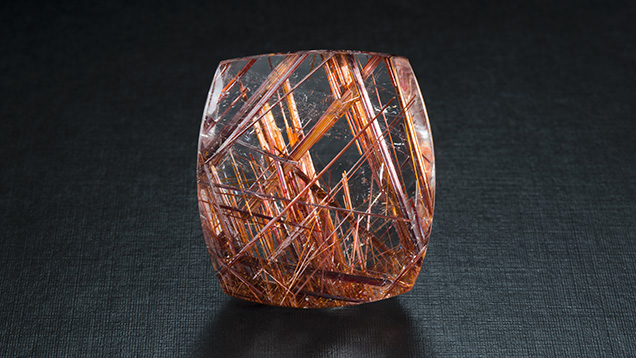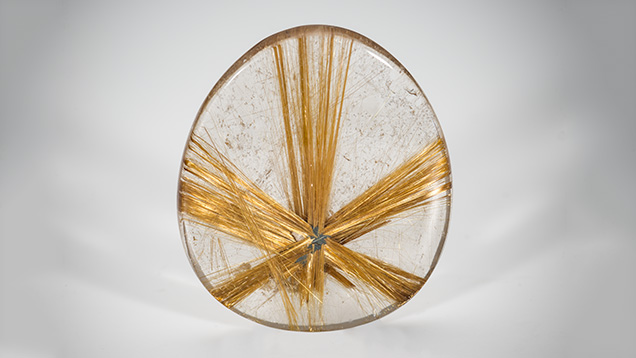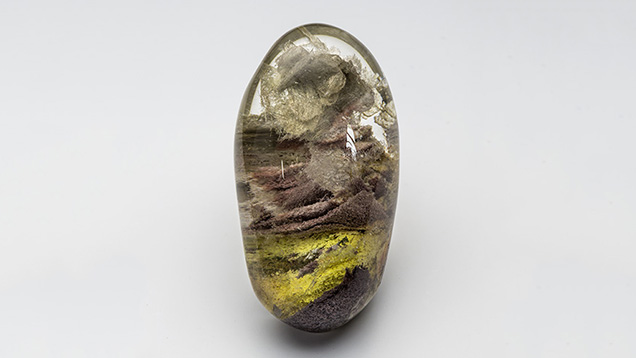Varieties of Rutilated Quartz – Tucson 2014

Golden and copper-color rutile is traditionally seen in quartz, and connoisseurs are always on the lookout for a six-rayed star pattern of rutile. Though such stars occur regularly in the rock crystal, they are rarely oriented in such a way to be easily cut into a faceted or cabochon gem. Strong, isolated rutile stars located in the rough must be painstakingly oriented to be visible face-forward, as in the 34.55 ct gem (figure 2) cut by Falk Burger (Hard Works, Tucson). At the center of the star, an additional inclusion of hematite is visible.

Figure 2. This 34.55 ct quartz has been cut to display the star-shaped needle formation. Photo by Robert Weldon; courtesy of Hard Works.

Figure 3. This 209.06 ct quartz features a rose-shaped cluster of inclusions. Photo by Robert Weldon; courtesy of Hard Works.
Burger said that rutile can take unusual forms as well. Minute gray rutile needles in the top of the quartz in figure 3 are clustered in the shape of a rose. The quartz also contains layers of pink and greenish chlorite phantoms. The quartz itself weighs 209.06 ct, and was fashioned by Burger to best exhibit the rutile rose.


